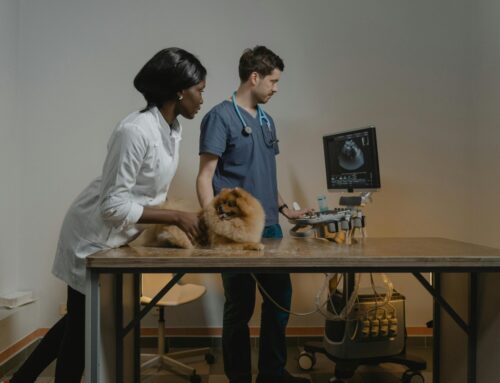Cats are known for their independence, but they’re not immune to various health issues. Like humans, cats can develop a number of diseases that can impact their overall well-being. Understanding the most common cat diseases can help you spot potential health problems early. With proper care and attention, you can keep your cat healthy and comfortable for years to come.
In this article, we’ll dive into some of the more common health problems in cats. We’ll cover their symptoms, causes, and how to address them before they become serious issues.
1. Feline Lower Urinary Tract Disease (FLUTD)
What Is FLUTD and What Are Its Signs?
Feline Lower Urinary Tract Disease (FLUTD) includes a variety of conditions that affect a cat’s bladder and urethra. It’s one of the frequent cat health issues and can range from relatively mild to quite serious, sometimes requiring urgent medical care.
Signs of FLUTD include:
- Frequent or painful urination
- Blood in the urine
- Excessive grooming around the genital area
- Crying or meowing when trying to urinate
- Accidents outside the litter box
The causes of FLUTD can vary and include urinary tract infections, bladder stones, or stress. Cats that eat low-quality food, don’t drink enough water, or are overweight are more likely to develop FLUTD.
Preventing and Treating FLUTD
Hydration is key in preventing FLUTD. Cats that drink more water are less likely to suffer from urinary issues. Additionally, a balanced diet that includes high-quality food is important. If you notice any signs of FLUTD in your cat, contact your veterinarian right away. Treatment may involve antibiotics, surgery, or dietary changes depending on the underlying cause.
2. Kidney Disease in Cats
What Is Kidney Disease in Cats?
Chronic kidney disease (CKD) is a widespread health concern in cats, especially in older felines. The kidneys are crucial for filtering waste and maintaining fluid balance. When the kidneys stop working properly, toxins build up in the body, leading to a range of health problems.
Typical symptoms of kidney disease include:
- Drinking more water than usual
- Frequent urination
- Loss of appetite or weight
- Vomiting and nausea
- Lethargy
How to Manage Kidney Disease in Cats
Unfortunately, kidney disease is usually not curable, but it can be managed. Providing a specialized diet and ensuring your cat stays hydrated are essential steps. In some cases, medications can help control symptoms, but regular vet visits are necessary to monitor the condition. While the disease may not go away, with proper care, cats can continue to live happy, comfortable lives.
3. Dental Problems in Cats
The Importance of Oral Care for Cats
Dental health is a common issue that often gets overlooked by pet owners. Yet, dental disease is a major contributor to discomfort and illness in cats. Cats can suffer from gingivitis, periodontal disease, or tooth resorption, all of which can lead to pain and difficulty eating.
If your cat has dental problems, you may notice the following:
- Bad breath
- Drooling or foaming at the mouth
- Trouble chewing or loss of appetite
- Pawing at the mouth
- Red, swollen, or bleeding gums
How to Avoid and Treat Dental Issues
The best way to prevent dental disease is to brush your cat’s teeth regularly. But since many cats don’t tolerate brushing, consider using dental treats, water additives, or specially designed cat chews. If you notice any of the signs listed above, it’s time for a veterinary check-up. Your vet may suggest a professional cleaning or other treatments to alleviate pain and prevent further damage.
4. Feline Hyperthyroidism
What Is Feline Hyperthyroidism?
Feline hyperthyroidism is a condition that occurs when a cat’s thyroid glands produce too much thyroid hormone. This common disease in cats affects older cats more frequently. The thyroid hormone controls metabolism, so an overactive thyroid can cause a number of health problems, including weight loss, increased appetite, and restlessness.
Signs of hyperthyroidism include:
- Rapid weight loss despite an increased appetite
- Increased energy levels and restlessness
- Vomiting
- Diarrhea
- Unkempt coat or excessive shedding
How to Treat Hyperthyroidism in Cats
Hyperthyroidism is treatable with several different methods, including medication, radioactive iodine treatment, or surgery to remove the thyroid glands. Your vet will help determine the best course of action based on your cat’s specific condition. In most cases, cats respond well to treatment and can return to a normal, happy life.
5. Fleas and Tick-Related Diseases
A Hidden Danger
Fleas are more than just a nuisance—they’re one of the leading causes of skin problems in cats. Flea infestations can lead to itching, hair loss, and even allergic reactions. Fleas can also carry parasites like tapeworms or bacteria that cause cat scratch fever, which can affect both cats and humans.
Ticks also pose a risk, as they can spread diseases such as Lyme disease or anaplasmosis, which can cause symptoms like fever, joint pain, and general lethargy.
How to Prevent Fleas and Ticks
Keeping your cat on a regular flea and tick prevention program is vital. There are several options, including topical treatments, collars, and oral medications. Make sure to clean your cat’s bedding and environment regularly to keep fleas at bay.
6. Upper Respiratory Infections
What Are Upper Respiratory Infections?
Upper respiratory infections (URIs) are common viral diseases in cats, usually caused by feline herpesvirus or calicivirus. Cats suffering from URIs may experience sneezing, watery eyes, and nasal discharge. The infection can spread quickly, especially in multi-cat households.
Symptoms of a URI include:
- Sneezing or coughing
- Watery eyes or nasal discharge
- Fever
- Loss of appetite
Treating and Preventing URIs
Most upper respiratory infections resolve on their own, but some cats may need medication to help with symptoms. If the infection is bacterial, antibiotics may be prescribed. Keep your cat warm and comfortable while they recover. Vaccination is the most effective way to prevent certain viruses that cause URIs.
7. Diabetes in Cats
What Is Feline Diabetes?
Feline diabetes is a disease that occurs when a cat’s body can’t properly produce or respond to insulin. It’s becoming more common, especially in older, overweight cats. Symptoms include excessive thirst, frequent urination, weight loss, and lethargy.
Without treatment, diabetes can lead to serious complications, including nerve damage, cataracts, and even coma.
Managing Feline Diabetes
Diabetes can be managed with insulin injections and dietary changes. A special diet low in carbohydrates is typically recommended. Keeping your cat at a healthy weight and monitoring blood glucose levels regularly are also key steps in managing the disease. With proper care, diabetic cats can live long, healthy lives.
8. Feline Cancer
Understanding Feline Cancer
Cancer is a serious condition that affects many older cats. Different types of feline cancers can occur, such as lymphoma, mast cell tumors, or squamous cell carcinoma. The symptoms vary depending on the type of cancer, but some common signs include unexplained weight loss, lumps or swelling, and changes in appetite or behavior.
Treatment Options for Feline Cancer
Cancer treatment for cats can involve surgery, chemotherapy, or radiation, depending on the type and severity. Palliative care may also be an option to keep the cat comfortable. Early detection plays a crucial role in the outcome, so regular check-ups are important.
Conclusion: Keeping Your Cat Safe and Healthy
Understanding the common diseases in cats is the first step in ensuring your feline friend stays happy and healthy. By keeping an eye on your cat’s behavior, providing proper nutrition, and scheduling regular vet visits, you can prevent many of these health issues or catch them early.
Cats are often independent, but they still need us to provide them with the care they deserve. Stay informed about potential health problems, and you’ll be well-equipped to give your cat the best life possible. If you’re ever concerned about your cat’s health, don’t hesitate to contact your vet for advice and assistance.




